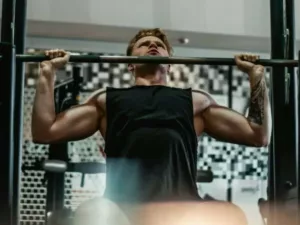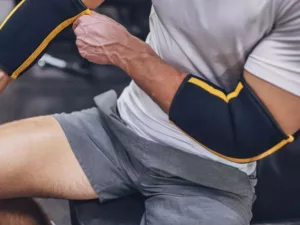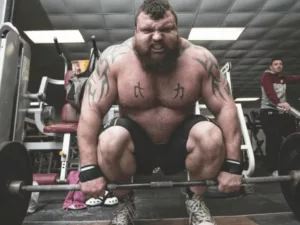(Last Updated on October 6, 2025 by Henry)
Wrist wraps have become a mainstay for many serious gym enthusiasts, especially those involved in weightlifting, CrossFit, and powerlifting. When pushing, pressing, or even pulling heavy loads, wrist stability becomes critical. This is where wrist wraps come into play, offering essential support that can help prevent injuries and enhance overall performance.
Lifting weights imposes significant stress on the wrists, often leading to common issues like strain or injury during exercises like bench presses, overhead lifts, or snatches.
The repetitive stress from these movements can easily lead to hyperextension or other wrist injuries if not properly managed.
Wrist wraps are designed to provide that crucial stability by securing the wrist joint, thereby reducing the risk of injury and enhancing performance.
They also improve grip strength and endurance by allowing lifters to maintain wrist alignment under load: an important factor in grip performance during heavy training.
They offer a fixed support that keeps your wrists in proper alignment and prevents excessive movement, allowing for better control of the weight and contributing to more effective lifts. By improving wrist stability for a stronger grip, wraps enable consistent bar control and reduce early grip fatigue.
This article serves as your comprehensive guide to understanding wrist wraps. From what they are and how they function, to how they can be used to improve your lifting regimen safely, you’ll find everything you need to know. Whether you’re a beginner just starting out or a seasoned lifter aiming to maximize your lifts, wrist wraps can be a valuable addition to your gym toolkit.
Understanding Wrist Mechanics in Lifting
Wrist joints are complex structures that play a critical role in transferring power during lifting exercises. When lifting heavy weights, the wrists are under considerable pressure, especially during common movements such as bench presses, cleans, and overhead presses. In these activities, the wrist needs to maintain stability, balancing between flexion and extension, which can be quite taxing without proper support.
The human wrist is prone to strain under heavy loads due to its intricate structure and range of motion, making it one of the weaker links in the kinetic chain during weightlifting. Maintaining a neutral wrist position is key, as it not only aids in reducing the risk of injury but also ensures optimal power transfer from the arms through to the barbell. This wrist stability directly supports grip performance, helping lifters maintain a firm, consistent hold throughout the movement.
Wrist wraps assist by providing external support that helps maintain this neutral alignment. They act as a stabilizer that prevents the wrist from bending excessively under pressure, thus reducing the risk of hyperextension or other injuries. In turn, they enhance grip endurance by minimizing wrist fatigue, allowing you to sustain grip strength during longer or heavier sets. By using wrist wraps, you can focus more on lifting without having to worry about wrist strain or compensatory movements that could dampen your overall performance.
For many lifters, keeping the wrists properly aligned allows for more efficient lifts and better control over the weights. This level of control is essential not just for lifting heavier but also for performing lifts with correct form. When combined with targeted grip training, wrist wraps can improve grip stability and confidence under load, making them a valuable part of a complete grip strength program. And while external support plays a part, it’s equally important to work on strengthening the wrists and enhancing their mobility through targeted exercises, ensuring long-term joint health.
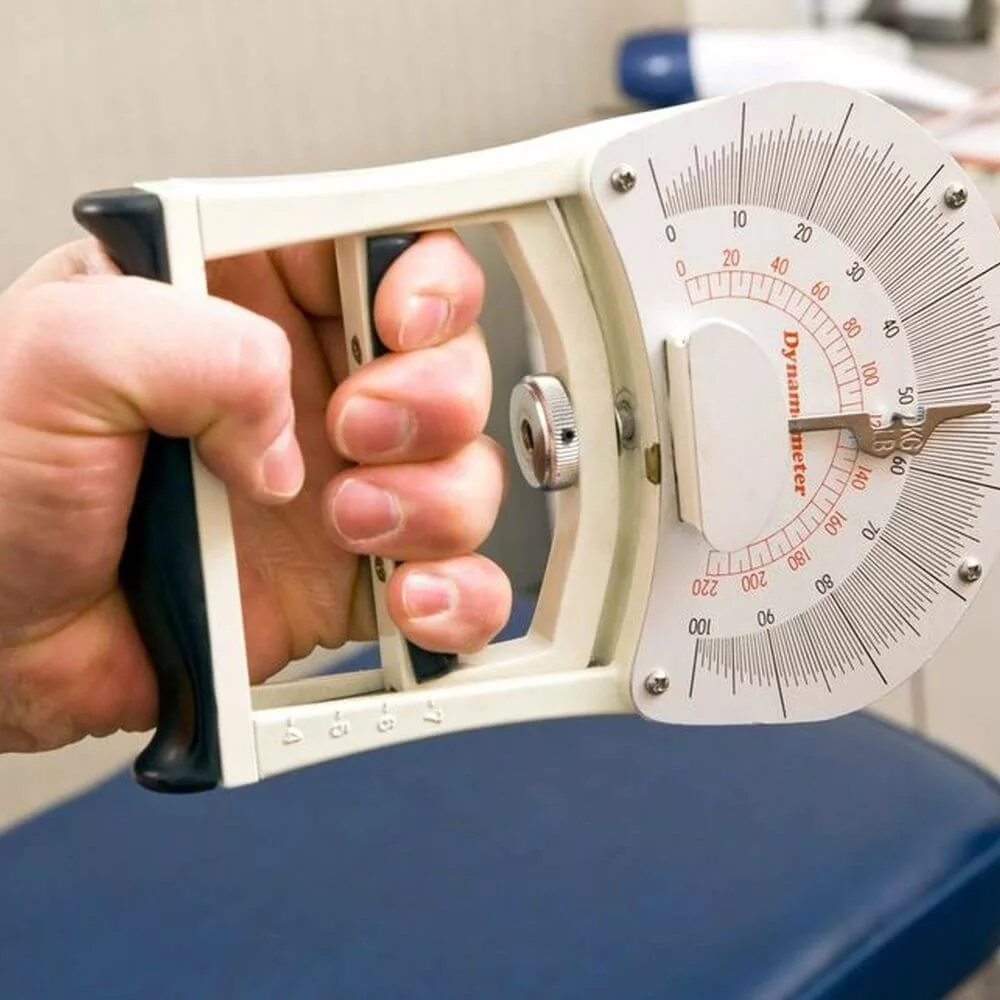
Crush Grip Training: Best Exercises & Tools for Stronger Hands

Pinch Grip Training: Proven Exercises & Tools to Boost Thumb Strength

Support Grip Training: Build Endurance & Lift Heavier Safely
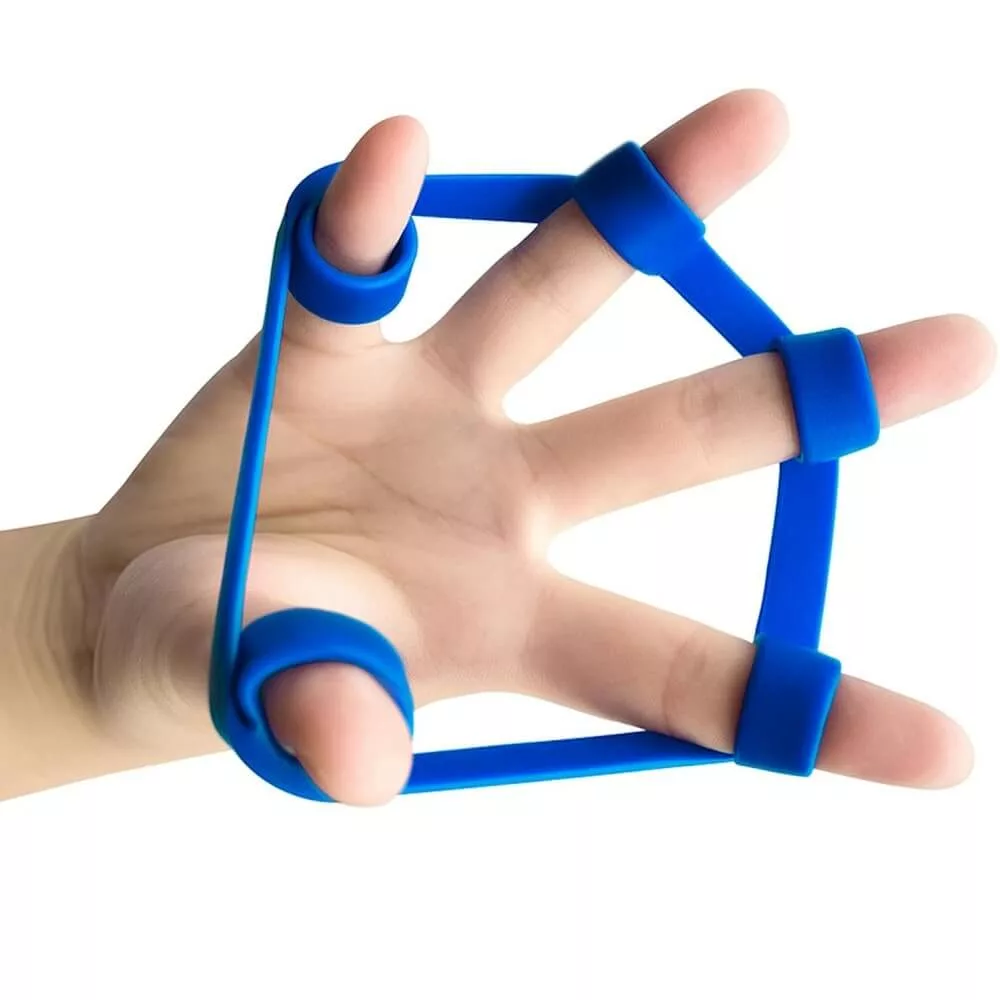
Finger Extensor Training: Prevent Hand Pain & Build Balance

The 5 Primary Hand Movements: Gateways To Grip Strength

Train Your Wrists Like a Pro: Gain Strength, Mobility & Prevent Injury
What Are Wrist Wraps & How They Work
Wrist wraps are essential gym accessories crafted to bolster the wrist joint during heavy lifting sessions. While they often get confused with wrist straps, which aid mainly in grip during pulling movements, wrist wraps are specifically designed to stabilize and protect the wrists.
However, many lifters overlook how wrist wraps indirectly enhance grip strength by keeping the wrists firm and aligned: creating a stronger foundation for controlled, confident lifts.
Typically made from a combination of elastic and cotton materials, wrist wraps come equipped with a Velcro closure and a thumb loop. These features make them easy to adjust for the right amount of tension and support. Wraps can vary in length, usually ranging from about 12 to 36 inches, allowing lifters to choose the support level that best suits their needs.
Longer wraps tend to offer more rigidity and support, which is beneficial for heavy powerlifting, while shorter, more flexible wraps are great for regular gym sessions and overhead lifts. This adjustability is key for improving grip performance in weightlifting, as proper tension helps maintain grip consistency throughout each lift.
The key to their effectiveness lies in how they distribute pressure and support across the wrist joint, restricting excessive movement that can lead to injuries. The tightness can be adjusted based on the lifter’s preference, with some opting for a snug fit to maximize support and others choosing a looser feel for more flexibility.
The choice of material, such as cotton versus nylon or elastic, can also impact the wrap’s flexibility and durability. A well-fitted wrap not only protects your wrist but also supports grip endurance, reducing the fatigue that often limits grip strength in longer workouts.
In gyms, CrossFit boxes, and competitions, wrist wraps are a common sight due to their versatility and ease of use. They provide support for a variety of lifting exercises, helping athletes push their boundaries safely.
When combined with grip training tools or forearm exercises, wrist wraps can significantly improve overall grip stability and control during compound lifts. By understanding how wrist wraps function and choosing the right type for your training demands, you can enhance your lifting capability while safeguarding your wrists.
Benefits of Using Wrist Wraps in Weightlifting
Wrist wraps offer invaluable benefits to weightlifters and athletes looking for enhanced performance and safety. One of their primary advantages is the increased joint stability they provide. By securely wrapping around the wrist, they help maintain optimal alignment and control when handling heavy weights. This improved wrist stability also supports a stronger grip foundation, allowing lifters to maintain grip consistency under load and improve grip strength over time.
The chances of hyperextension and wrist injuries are significantly reduced with the use of wrist wraps. This external support limits unnecessary movement, helping safeguard against exertion-related injuries, which is especially beneficial during exercises like presses and overhead lifts. Because the wrists remain stable, more of your focus and power can be directed toward grip engagement, enhancing grip performance in weightlifting sessions.
Beyond injury prevention, wrist wraps contribute to greater comfort and confidence during lifts. Knowing that your wrists are securely supported allows you to focus more on form and execution, rather than worrying about potential strain. This peace of mind often translates into improved lifting form, as proper positioning of joints is easier to maintain. Over time, this combination of stability and alignment reinforces hand and forearm engagement, boosting grip endurance and control during demanding lifts.
For those experiencing fatigue or undergoing rehab, wrist wraps can help manage the additional stress on the wrists, making progression safer and more manageable. They provide a consistent level of support across all phases of training, including warm-ups, work sets, and cooldowns. Even in later sets when grip fatigue sets in, wrist wraps help maintain wrist alignment so grip pressure remains steady throughout the workout.
Wrist wraps are particularly effective in specific scenarios, such as during bench presses, military presses, push presses, and other compound movements involving significant wrist stress. By incorporating wrist wraps into your routine, you can target these lifts with greater aggression and assurance, ultimately driving better results. When used strategically in grip-focused training, they serve as a bridge between raw wrist strength and long-term grip development.
How to Use Wrist Wraps Properly
Using wrist wraps correctly is key to maximizing their benefits while ensuring safety and comfort. Here’s a simple guide to applying them the right way for your lifting sessions. When used properly, wrist wraps not only stabilize your wrists but also improve grip strength and control, especially during heavy pressing or overhead lifts.
Start by sliding your thumb through the loop provided on most wrist wraps. This helps anchor the wrap, ensuring it stays in place while you begin wrapping. Keeping the wrap aligned across your palm and wrist promotes balanced grip pressure and helps prevent early grip fatigue.
Next, pull the wrap snugly across the back of your hand and around your wrist. The direction in which you wrap can depend on personal preference, but generally, it should follow the natural line of your wrist to encourage alignment. This wrapping direction also supports consistent wrist stability for stronger grip performance during lifts.
As you wrap, adjust the tension to your liking. The goal is to have the wrap tight enough to provide support yet not so tight that it cuts off circulation. Test the tightness by moving your wrist: a little resistance is good, but you should still be able to move comfortably. The ideal tension allows full grip engagement while maintaining wrist integrity under load.
For pressing or overhead lifts, position the wrap mid-forearm, ensuring that its support follows through to cover the wrist joint. This setup gives you the most stability and control over the weight. Proper placement enhances your ability to sustain grip consistency during compound lifts.
There are a few important dos and don’ts to keep in mind. Don’t wrap too tight; you want stability, not a tourniquet. Avoid leaving wraps on between sets to allow for proper blood flow and recovery. Always check the fit before lifting heavy to ensure consistent support. Regularly adjusting tension helps prevent grip fatigue and ensures your grip endurance remains strong throughout longer training sessions.
Finding the right fit and tension can take a bit of practice. Testing out different configurations allows you to understand what feels best for different lifts. Each application can vary depending on the exercise: bench presses might require a different tension than an overhead press. Experimenting this way not only improves wrist stability but also fine-tunes grip confidence for each type of movement.
For those new to wrist wraps or needing product suggestions, checking out a “Best Wrist Wraps for Beginners” review can be helpful. This can guide you in selecting a pair that matches your level and lifting needs. Choosing wraps suited to your grip goals ensures optimal wrist support and stronger grip performance over time.
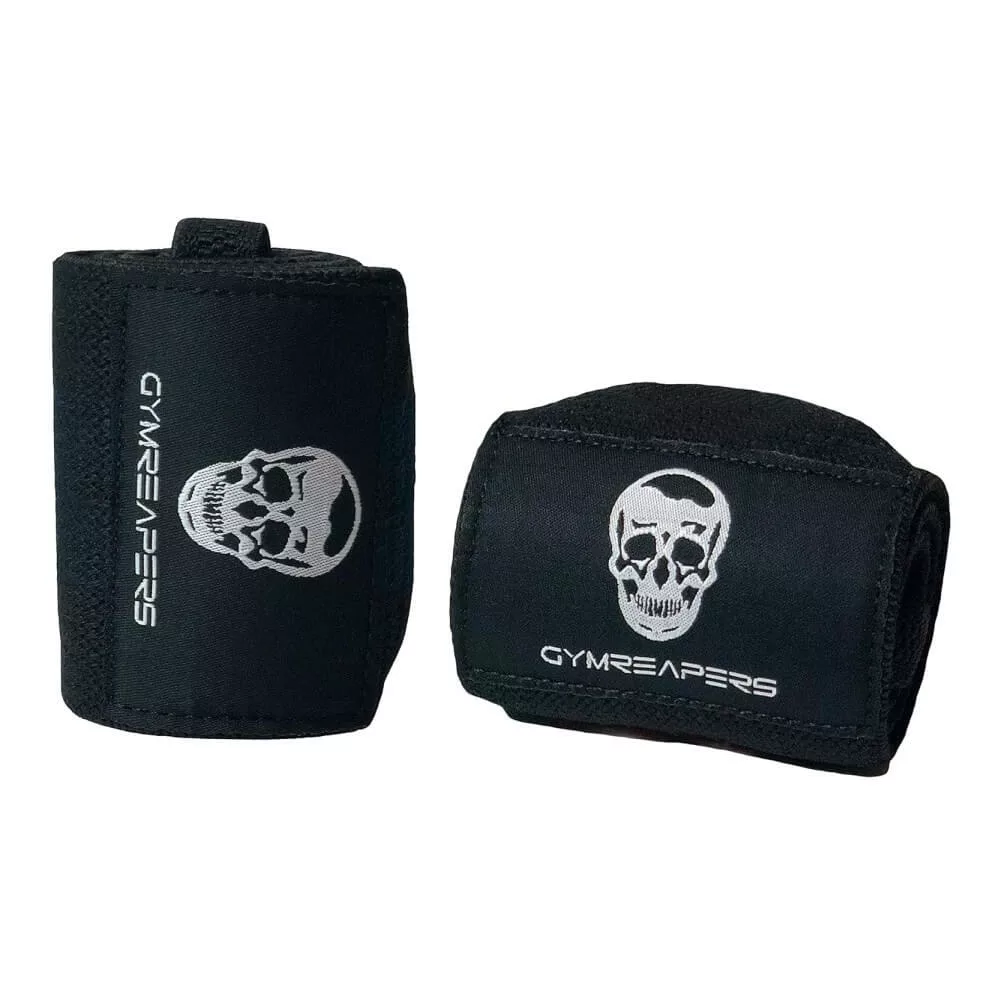
Competition Grade Wrist Wraps: Built for Serious Lifters

Extra Long Wrist Wraps: More Support, More Stability
Types of Wrist Wraps and Choosing the Right One
Wrist wraps come in a variety of styles and materials, each catering to different lifting needs and preferences. Selecting the right type can enhance both your comfort and performance. The right wraps not only protect your wrists but also support grip performance, helping you maintain consistent grip strength during heavy training sessions.
Light wraps are typically shorter and more flexible, making them ideal for general gym use and CrossFit activities. They offer enough support for everyday lifts without hindering movement, allowing for a good range of motion during dynamic exercises. These are great for lifters who want mild wrist stability while keeping natural grip engagement active.
Medium wraps strike a balance between support and flexibility. They’re perfect for intermediate lifters who want a bit more stability but still value some freedom in wrist movement. These are versatile enough for a variety of lifting styles, providing stability without the rigidity of heavier wraps. This balance allows improved wrist control and better grip consistency across different movements.
For those tackling max-effort lifts or competitions, heavy-duty wraps are the way to go. Longer and stiffer, these wraps offer maximum support, ensuring minimal wrist movement under heavy loads. This is especially beneficial for powerlifters who need the additional support to maintain form during high loads. Heavy wraps can also help sustain grip endurance by preventing wrist collapse under pressure, ensuring your grip remains strong through maximal lifts.
When choosing a material, consider the benefits of options like cotton, nylon, and elastic. Cotton wraps tend to be more comfortable and breathable, while nylon wraps might provide additional durability and stiffness, depending on how they’re structured. Elastic wraps offer more versatility in both fit and function, making them a popular choice for varying workout types. Elastic or hybrid wraps often enhance grip control by adjusting naturally to wrist flexion during pressing and gripping movements.
Your goals should steer your choice of wraps. Beginners might lean towards lighter wraps for comfort, whereas seasoned powerlifters could prefer heavy-duty wraps for added stability. Those in rehabilitation or focusing on mobility might find medium wraps a beneficial middle ground. Matching your wrap type to your grip strength goals ensures optimal support, performance, and wrist safety during all phases of training.
If you’re still uncertain, reviewing specific product evaluations can offer more detailed insights. Looking into reviews that include Amazon CTAs can guide you to the right purchase, aligning product features with your lifting goals. Check out a detailed “Best Wrist Wraps for Grip Strength” review to find gear that boosts both wrist stability and grip endurance.
Common Mistakes and Misconceptions
Using wrist wraps correctly is crucial, yet some common mistakes can undermine their effectiveness. A prevalent error is using wraps on every exercise. Over-reliance can lead to neglecting natural wrist strength and mobility, potentially creating a dependency that weakens overall joint health. This also limits your ability to build raw grip strength, since your forearm and hand stabilizers aren’t challenged to their full potential.
Incorrect wrapping placement is another frequent problem. If the wrap sits too high or low on the wrist, it won’t provide the necessary support, leading to ineffective protection during lifts. The wrap should adequately cover and support the wrist joint without restricting movement. Proper placement enhances grip stability and ensures pressure is distributed evenly, which helps prevent grip fatigue during longer training sessions.
It’s also essential not to confuse wraps with straps, as they serve different purposes. Wrist wraps stabilize the joint during pressing exercises, while straps are meant for improving grip during pulling movements. Knowing when and how to use each can maximize the effectiveness of your workouts. For example, wraps improve wrist stability for pressing movements, while straps are better for assisting grip performance in pulling lifts: both tools can complement each other when used strategically.
Neglecting wrist strengthening or mobility training is a mistake that often accompanies consistent use of wraps. While wraps support the wrist, they shouldn’t replace foundational strengthening exercises. Incorporating wrist stability exercises and grip training drills ensures a balanced approach to wrist health, promoting both flexibility and strength.
Building balanced wrist health is the key to lifting heavier and more efficiently. Use wrist wraps as a tool to aid your lifts, but always integrate wrist and forearm strengthening workouts. This balanced approach helps you develop resilient wrists that can handle stress with or without additional support. This holistic approach helps improve grip strength, prevent wrist strain, and maintain hand stability under load, allowing you to lift safely with or without external support.
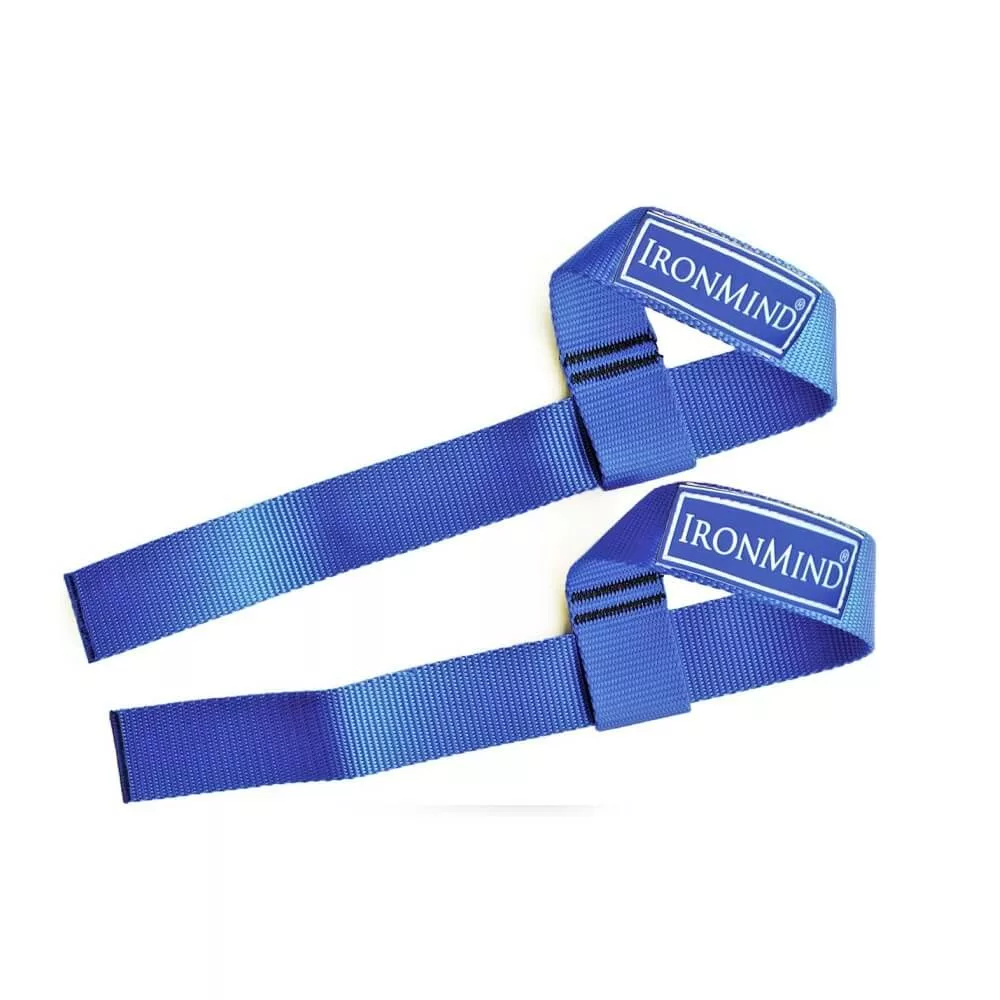
Fantastic General-Purpose Lifting Straps with Proven Results
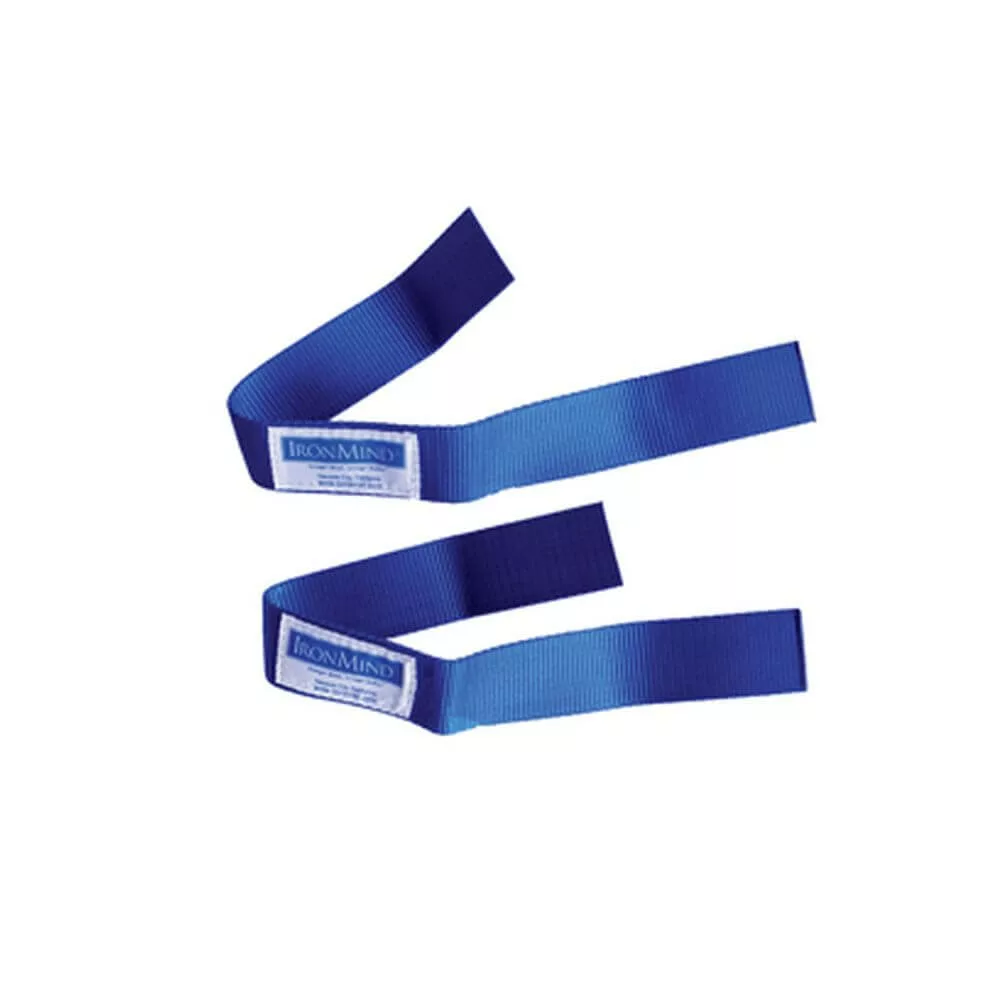
Olympic-Style Lifting Straps: Hard to Use, Epic for Bail Out

The Easiest Lifting Straps To Use: Perfect for Casual Training
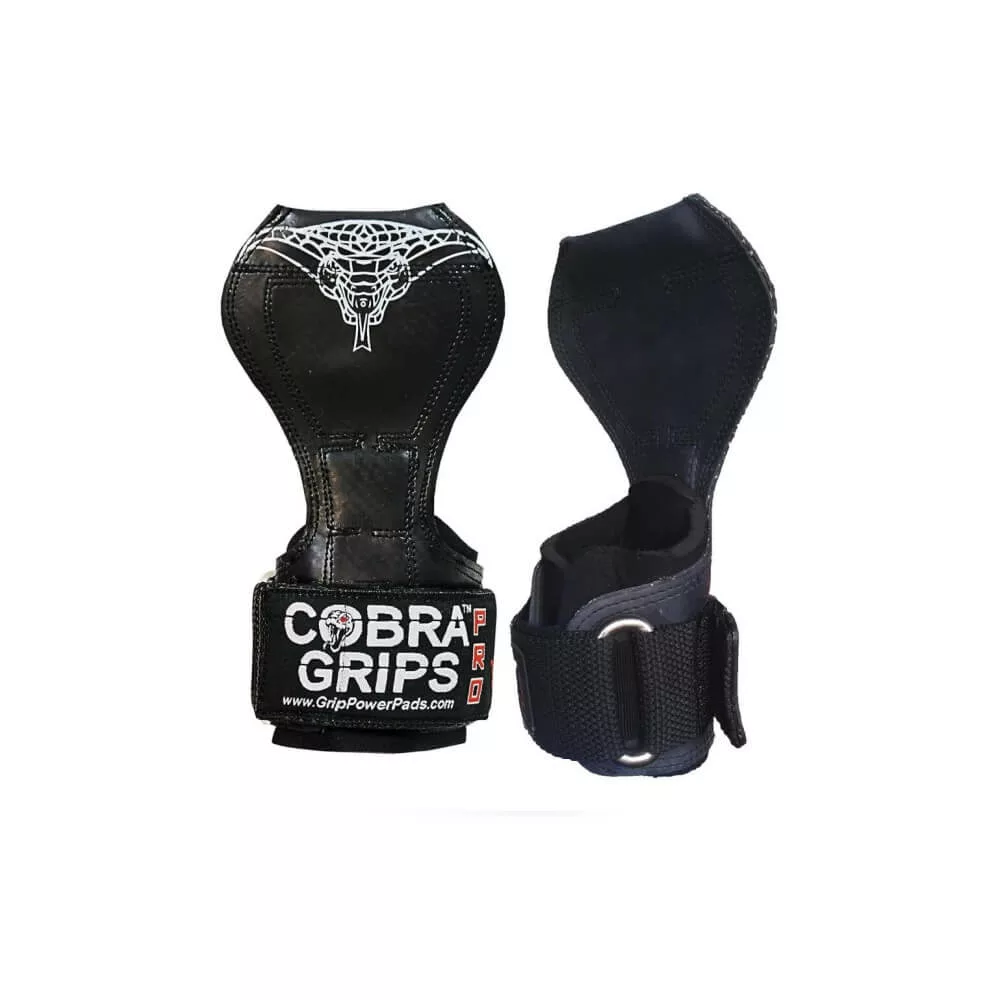
Versatile Lifting Grips: Can One Tool Replace Four?
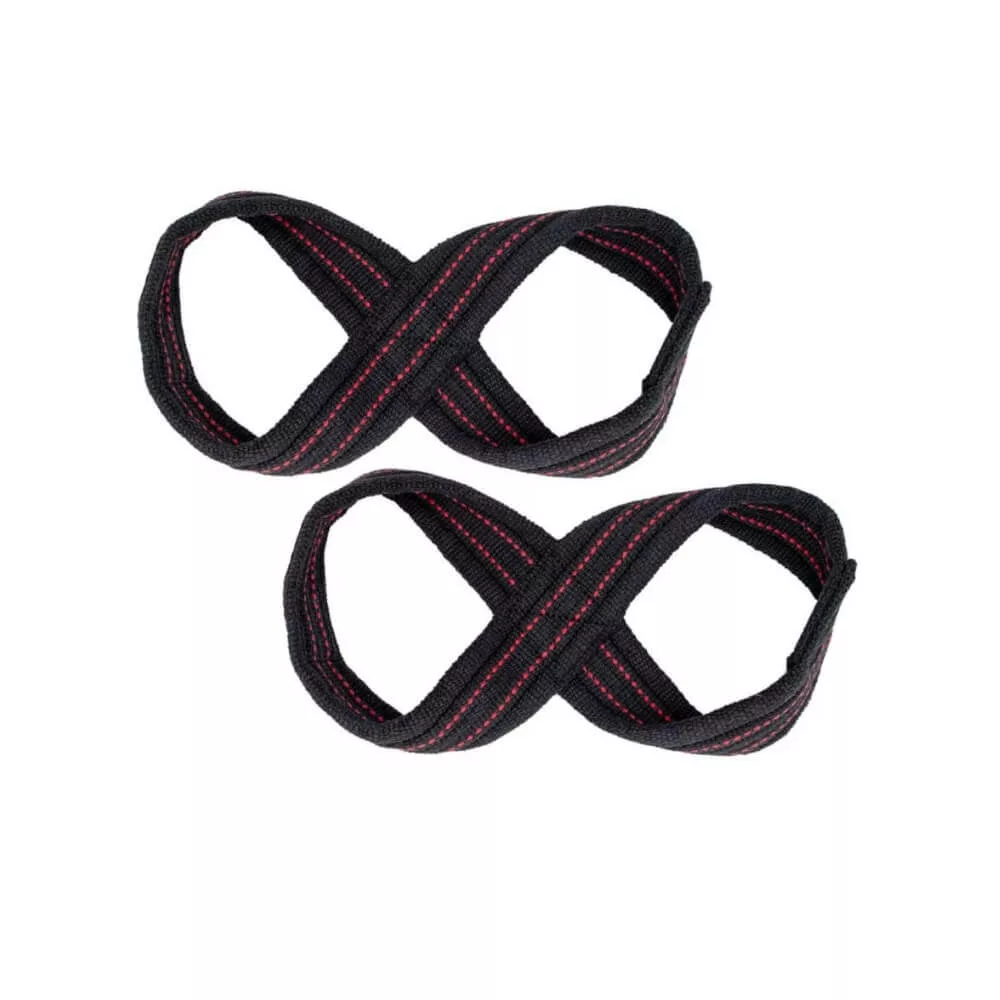
Figure 8 Lifting Straps: Excellent to Lock Your Grip on Barbell
Wrist Wraps vs Other Support Tools
Wrist wraps, wrist straps, and various grip aids each serve unique purposes in your lifting journey. Understanding when and how to use each can greatly enhance performance, safety, and long-term grip strength development.
Wrist wraps are indispensable during pressing movements. They provide critical wrist stability and joint alignment in exercises like bench presses, overhead presses, and push presses. This helps prevent wrist strain, reduce hyperextension risk, and ensures proper form throughout the lift. When used correctly, wraps indirectly support grip control by keeping the wrist in an optimal power position.
In contrast, wrist straps shine during pulling exercises such as deadlifts, rows, and pull-ups. Their primary purpose is to improve grip endurance by reducing grip fatigue, allowing lifters to maintain control without sacrificing form as loads get heavier. Understanding this difference between wrist support vs grip support helps prevent misuse and allows lifters to target specific training goals effectively.
Grip aids, including lifting hooks, gloves, and grip pads, offer additional ways to secure your hold on bars and dumbbells. These can be particularly beneficial for athletes dealing with hand fatigue, calluses, or recovering from wrist strain. However, they should complement, not replace, your grip strength training; the goal is to enhance natural capability, not rely on external tools indefinitely.
Using lifting chalk alongside wraps or straps can further enhance control by providing a dry, firm grip without adding bulk. This combination is especially useful in competitive environments or heavy compound lifts where maintaining grip security is essential.
For those aiming to develop raw grip strength naturally, limiting wrap or strap use on lighter sets can be beneficial. Incorporating dedicated grip strength exercises, like farmer’s carries, plate pinches, and towel pull-ups, builds endurance and resilience in the hands, wrists, and forearms. This creates a solid foundation for heavier lifts that don’t rely solely on external grip assistance.
Exploring resources on grip strength exercises or the best lifting straps for particular movements can provide further guidance, helping refine your approach to integrating these tools into your routines.
Care, Maintenance & Final Tips
Proper care of your wrist wraps will extend their lifespan and keep them in optimal condition. Start by regularly cleaning them to prevent odor and bacteria buildup, particularly after intense workouts. Most wrist wraps can be machine-washed on a gentle cycle, but hand washing with mild detergent is often recommended to maintain their elasticity and material quality. Keeping your wrist wraps clean not only ensures hygiene but also maintains their grip performance in weightlifting, allowing consistent wrist support for grip training.
After washing, allow your wraps to air dry completely. Avoid using a dryer, as the heat can degrade the elasticity over time. Storing them properly is also crucial; make sure they’re fully dry before putting them away in a cool, dry place to prevent any mildew or material damage. Proper storage helps preserve the tension needed to improve grip strength and sustain long-term wrist stability.
Pay attention to signs of wear and tear. Over time, wraps can lose their support, particularly if they’re frequently used for heavy lifting. If you notice fraying or significant loss of tension, it’s time to consider replacing them. Using worn wraps can reduce wrist stability for stronger grip performance, so timely replacement keeps your lifting form consistent and safe.
Wrist wraps are a simple yet powerful tool for enhancing your lifting safety and efficiency. They provide valuable support and stability, allowing you to lift heavier with confidence and reduce the risk of injury. With reliable wrist support for grip training, athletes can enhance both strength and endurance while minimizing strain during compound lifts. By integrating these wraps wisely into your routine, you build stronger, smarter lifting habits.
To further explore tools for optimizing your lifts, consider checking out resources like “Best Wrist Wraps for Powerlifting” or “Top Wrist Wraps for CrossFit.” Incorporating wrist strength and mobility exercises into your regimen will also help fortify wrist health and function. These routines not only prevent weak grip in lifting but also enhance forearm and hand stability for advanced training performance.
Embrace the benefits of wrist wraps as you pursue your lifting goals. Protect your wrists, lift with care, and build a foundation of strength that stands the test of time. With the right gear and a thoughtful approach, you can push your limits safely and effectively. When combined with consistent grip enhancement for lifting, wrist wraps become an essential component of a well-rounded strength routine.
Thanks for Stopping By
Have Questions?
Please Leave A Comment


